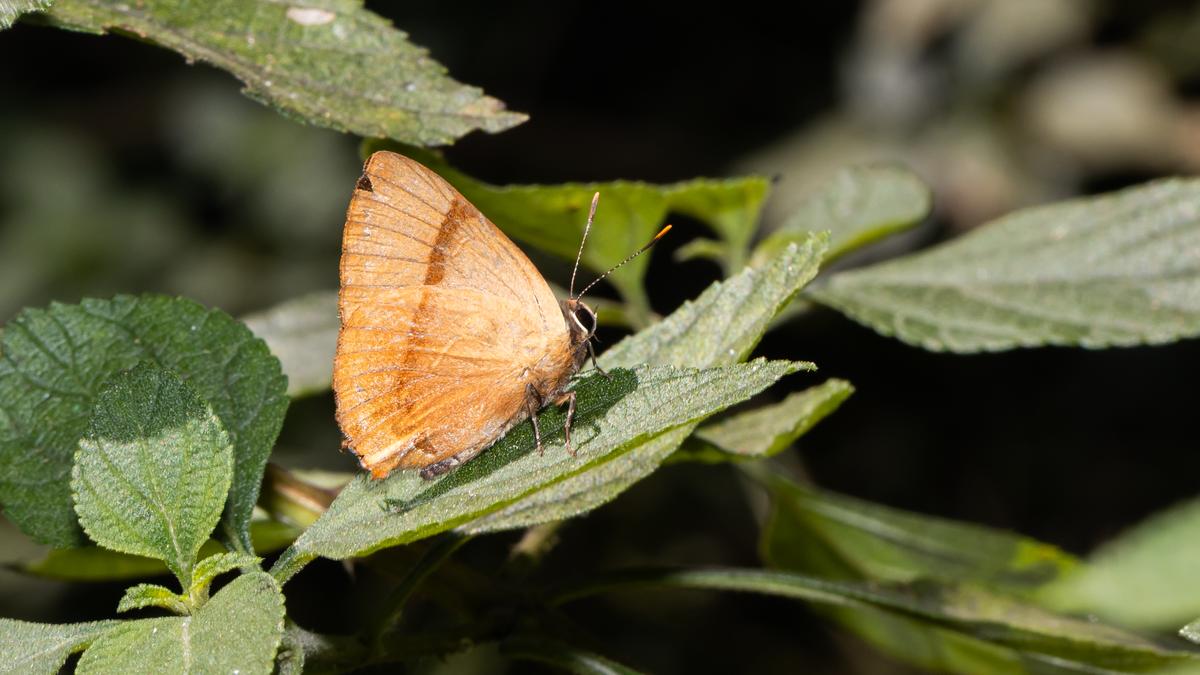Malabar Flash butterfly
| Photo Credit: Vinod Sriramulu
Butterfly pioneer Wynter Blyth MA mentions a butterfly in his book Butterflies of the Indian Region that came out in 1957. He talks of it as a rare one, observed in the Mettupalayam Ghats and Sri Lanka, in thick jungles often at an elevation between 1000 and 3000 ft. Later, Larsen Torben, who studied butterflies particularly in Asia and Africa, draws a reference to this butterfly in his research paper published in 1987. He mentions that it was recorded from Nadugani area in Gudalur as part of a Japanese butterfly collection.

“They are talking about the Malabar Flash or the Rapala Lankana, a butterfly belonging to the Blues family and considered very rare. It’s a dream species of any butterfly enthusiast,” says Vinod Sriramulu, founding member of Wynter Blyth Association (WBA) in the Nilgiris that creates awareness and works towards conservation of butterflies in the region. “It finds a mention only in the works of these two people so far. We have never documented this species in the last 10 years,” he says adding that he sighted it by chance along the Kundah slopes of the Nilgiris, at an elevation of 1500 ft.
“This make it the first ever photographic record of this species in the Nilgiris as of Feb, 2025,” he says, adding that it has surfaced after a long time, much to the excitement of butterfly enthusiasts.

This sighting has re-established the presence of this rare butterfly in the Nilgiris, a reminder of the thriving bio-diversity of the region. “I was photographing puddling butterflies along the road leading to Kundah. All of a sudden, I noticed a bright one fly by and rest on a leaf for a few seconds, basking in the sun. It flew away shortly thereafter. I waited for a few more hours, and also revisited the forests hoping to catch another glimpse. But that never happened,” says Vinod as he draws attention to the fact that this may be just the second photographic record of the Malabar Flash in Tamil Nadu.

Such fresh sightings of new species always leaves them thrilled, he says. “Until recently, the number of butterfly species and the density of sightings were good. We have documented significant ones like the Spotted Royal, Branded Royal and now, the Malabar Flash, out of the blue. We never anticipated it here as the records date back to the 1940s and 1980s. It’s a reminder that we need to keenly observe host plants, terrain, vegetation etc. A scientific approach will help us unearth more rare butterflies of the Western Ghats that are undocumented so far.”
Talking of phenomenal work done by citizen science forums pan-India in documenting biodiversity, he says websites like Butterflies of India and social media groups like Butterflies of Nilgiris Biosphere keep the buzz going. “We work towards bridging the gap between the scientific community and common people on butterflies and conservation. We documented for the first time the life cycle of Nilgiri Tit, a highlight species of The Nilgiris. WBA members have published the paper in an American Entomology Journal. We also recorded orchid tit butterfly, a rare one. It feeds on orchid leaves. The beautiful Common Banded Peacock is common in the hills but very rare in Kerala and Karnataka,” he says highlighting two critical things that need attention in butterfly conservation. “Fragmentation of habitat because of intense agriculture that has been continuing for decades and unmindful cutting of hedge plants along the roads and forest periphery,” he says, adding, “What seems like a weed might be a nectaring plant of a butterfly.”

Published – April 26, 2025 02:53 pm IST
